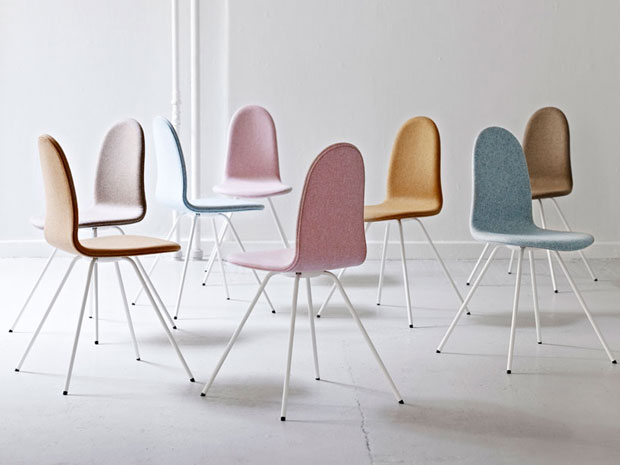
Arne Jacobsen’s iconic 1950s Tongue Chair is back
Mid-century modern classic is available again (and it's a bit more stable these days)
What is it about educational buildings? They seem to bring out the best in designers. Oxford University’s Bodleian Libraries have three top-notch players competing to design a new chair. So whether Amanda Levete, Matthew Hilton or Edward Barber and Jay Osgerby are named winners in September, the chances are that library-goers will be sitting on something pretty special in a few months’ time.
Likewise students at Copenhagen University’s Faculty of Humanities are now reclining on the Copenhague Chair by Ronan and Erwan Bouroullec; and at the Glasgow School of Art, board meetings take place on the new Mack Chairs in the Charles Rennie Mackintosh boardroom, designed by young duo Method Studio.
Perhaps it all started with Danish legend Arne Jacobsen, who in 1955 created the Tongue Chair for the Munkegård School in Copenhagen (which incidentally, he also designed).
{media1}
The Tongue Chair has finally been reissued, by Danish manufacturer Howe. (The chair did get a second life in the for a few years in the 80s, but it was over-shadowed by Jacobsen’s first chair: the Ant). Howe has updated the production techniques, making it more stable and long-lasting than the short-lived original. But - and thank goodness for this – they haven’t attempted to alter the classic design. “It has the immediately recognisable characteristics of the organic waveform in the seat; complemented with highly sculptural, splayed legs,” says Howe.
Now you can have a Tongue for every day of the week, in beech, oak or walnut veneer, or in stained veneer in black, white and teak. Then there are the upholstery options of different colour fabrics and leather. Phaidon.com's hope is that Howe will now reissue the school desk Jacobsen also designed for the Munkegård School. A fine thing in chromed steel and plywood, it would be the perfect complement to the newly-engineered Tongue.
And if you'd like to learn more about one of Jacobsen's iconic projects his masterwork, the SAS House in Copenhagen, completed in 1960 take a look at our book Room 606. It's an intriguing study of the work of the Danish architect and furniture designer through a detailed series of chapters that examine Room 606, the only preserved area of the hotel and a 'time-capsule' of exquisite woodwork, furnishings, and custom fabrics and colour palette. Check it out in the store now. You'll also find many great examples of his work in our about to be published The Design Book.